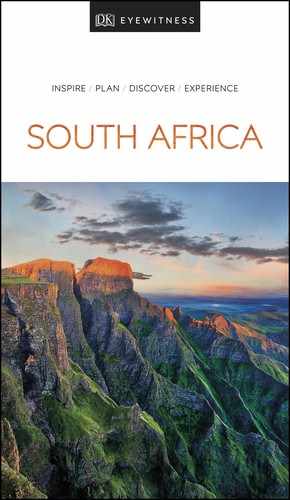Experience
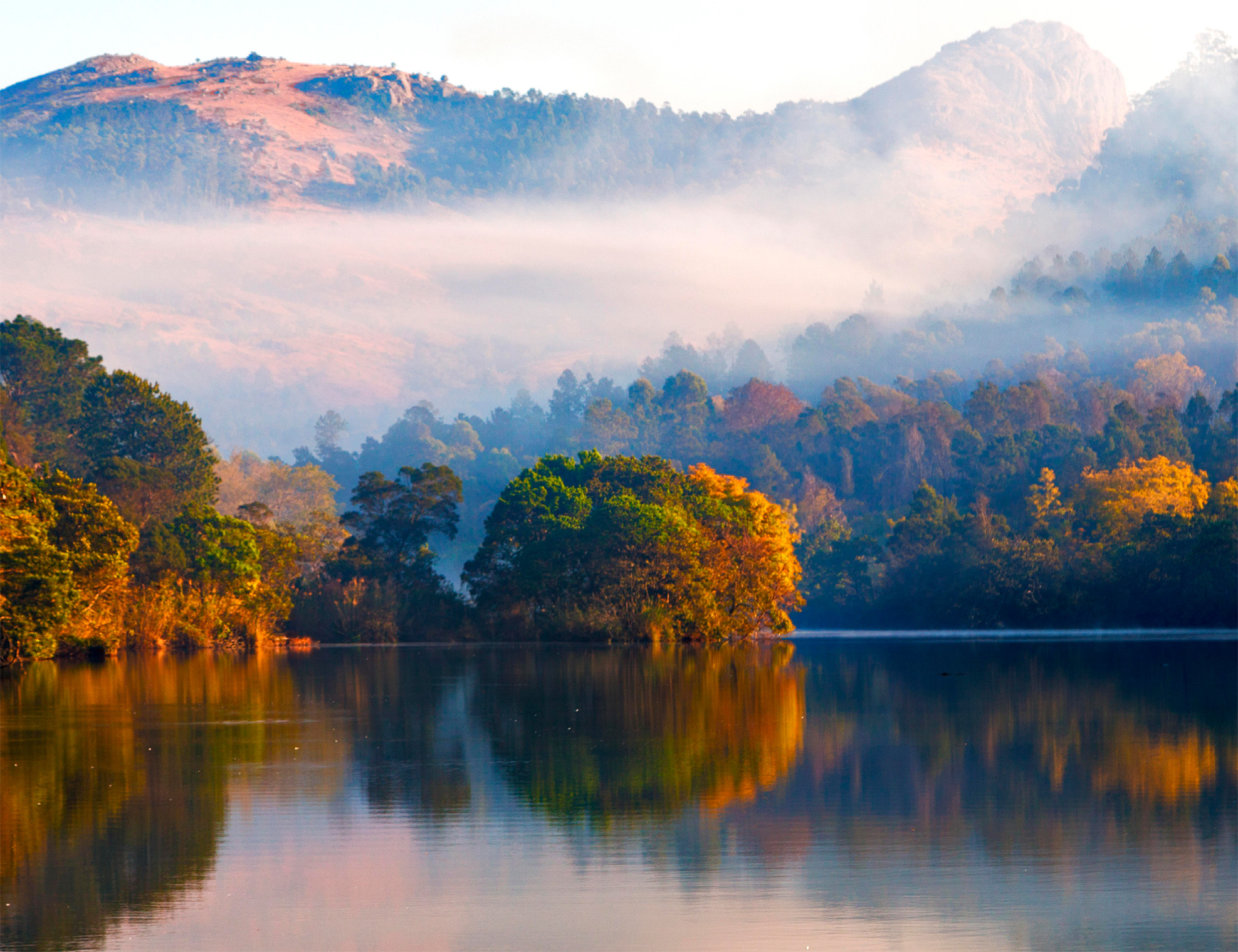
t Atmospheric early morning mist hanging above a lake in Mlilwane Wildlife Sanctuary
The kingdom’s oldest protected area, Mlilwane came into existence in 1961 when Ted and Liz Reilly, doyens of conservation in eSwatini, decided to convert their farm into a wildlife sanctuary (and an abundance of non-indigenous trees still betrays this past life). Guided and self-guided game drives are on offer, but the absence of dangerous game makes Mlilwane particularly well suited to more active exploration, whether it be mountain biking, horseback safaris or meandering along a 20-km (12-mile) network of self-guided trails. The siSwati name Mlilwane means “Little Fire” and refers to a hill where fires are frequently started by lightning strikes.
Did You Know?
eSwatini’s monarchs are polygamous. The current king, Mswati III, has 15 wives, and his father had 70.
The most industrialized town in eSwatini, Manzini was also the largest prior to being outstripped by Mbabane around the turn of the millennium. Although it largely matches Mbabane in the blandness stakes, Manzini does possess a more down-to-earth character, and it tends to be somewhat warmer thanks to its lower elevation. Its central market, Manzini Main Market, is also excellent. The lower floor is dedicated to fresh produce, while upper floor stalls sell the basketwork and other crafts for which the kingdom is famed (usually at better prices than the more touristy stalls in the Ezulwini Valley). The market is busiest on Thursday, when it hosts a macabre cluster of traditional medicine stalls.
Manzini Main Market
⌂ Mancishane St # 6am–6pm Mon–Sat
In 1887, the pioneer Michael Wells established a rudimentary hotel and shop where the main trade route between Maputo (Mozambique) and the Transvaal Republic forded the Mbabane River. Set at an agreeable elevation of 1,250 m (4,100 ft), this simple trading post rapidly attracted further European settlement, and in 1902 it was chosen as capital of the Swaziland Protectorate. Now a rather bland urban sprawl with a population of 100,000, Mbabane remains the capital of eSwatini, and is a useful base for exploring.
Southern Africa’s oddly underpublicized counterpart to Uluru, Sibebe is the world’s second-largest exposed rock monolith, rising a full 350 m (1,148 ft) from its 165-sq-km (64-sq-mile) base in the Mbuluzi River Valley.
Where its larger Australian rival is composed of sandstone, Sibebe is a 3-billion-year-old granite batholith whose sparsely vegetated lunar dome is merely the tip of a formation that extends for a full 15 km (9 miles) below the earth’s surface. A truly startling apparition, its main face can be ascended on foot, a giddying three-hour climb that is not for the faint of heart (and could be genuinely dangerous after rain). Guided ascents are billed as the world’s steepest commercial walk.
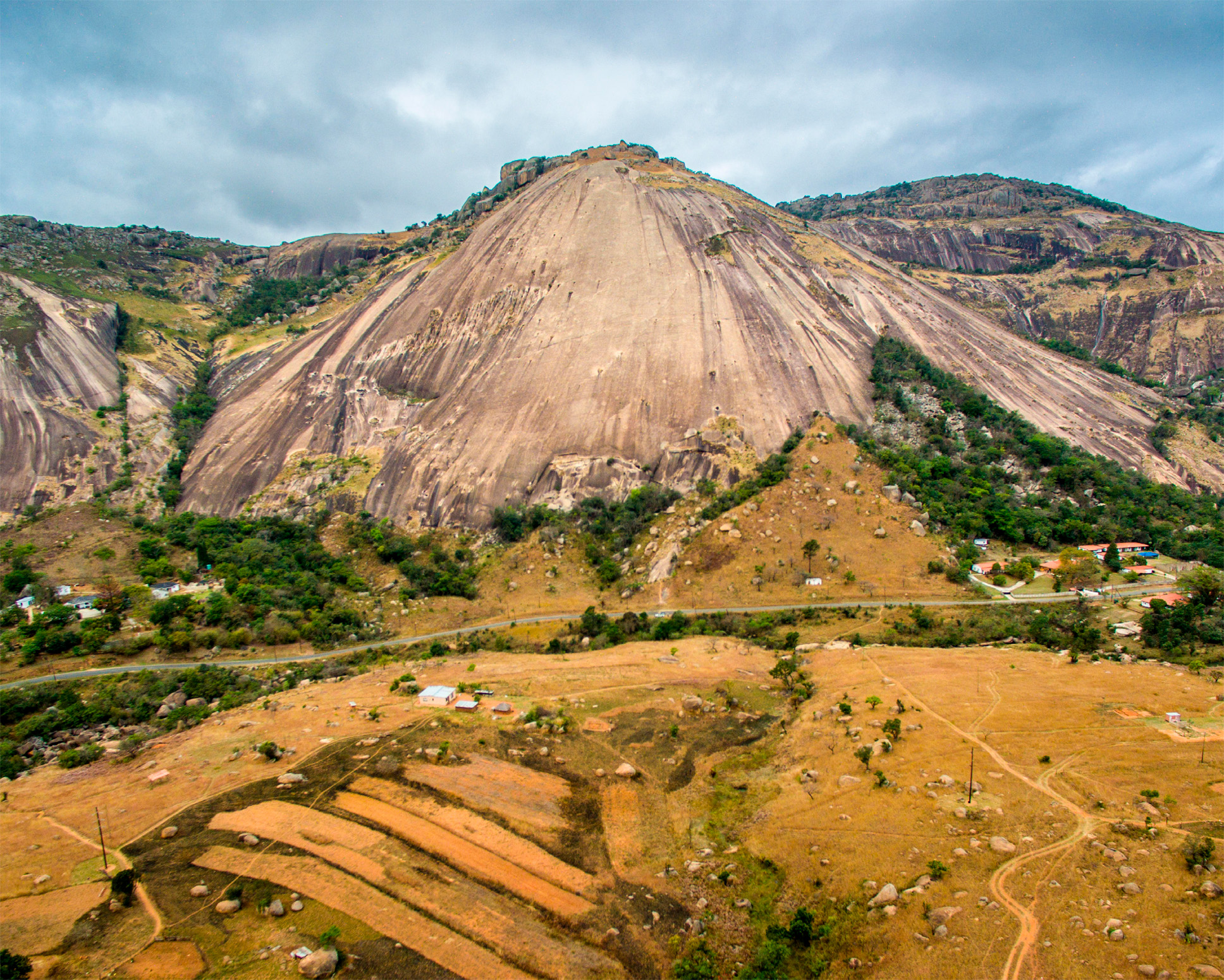
t The immense Sibebe Rock, towering over the countryside surrounding Mbabane
The Ezulwini Valley thrived as a tourist centre in the apartheid era, when gambling was banned in South Africa, and it hosted a row of casinos to lure punters across the border. Three decades on, the valley remains the kingdom’s most important tourist hub, though these days it attracts a more cosmopolitan clientele with a wholesome range of cultural, natural and outdoor attractions.
Foremost among these is the Mantenga Nature Reserve, where a reconstructed Swazi village offers fascinating tours and lively traditional musical performances. Mantenga’s riverine scrub is set below Execution Rock, a foreboding granite outcrop from where convicted murderers used to be thrown to their death.
At the southern end of the valley, Lobamba, traditional seat of the Swazi monarchy, is home to the National Museum of eSwatini, whose displays include an absorbing collection of historical photographs. A more commercial attraction is the Swazi Candle Factory, which produces colourful, oddly shaped Swazi candles.
EXPERIENCE Eswatini
|
Eat & STAY eDladleni Swazi Restaurant Tasty traditional Swazi fare in a log building with a tree-lined deck. ⌂ Off the MR3, Ezulwini Valley ∑ edladleni.100webspace.net Ramblas Restaurant A friendly eatery specializing in steak and seafood, with a broad wine list. ⌂ Mantsholo Rd, Mbabane ¢ Sun ∑ rambasmbabane.com Mlilwane Rest Camp Good value set-up with a range of accommodation options, including traditional beehive huts. ⌂ Mlilwane Wildlife Sanctuary ∑ biggameparks.org Royal Swazi Spa Valley A swish resort renowned for its golf course and casino. ⌂ Ezulwini Valley ∑ suninternational.com/royal-swazi-spa Mkhaya Stone Camp A tranquil camp of attractive stone chalets. Rates include activities and meals. ⌂ Mkhaya Game Reserve ∑ biggameparks.org |
Founded by the prospector William Pigg, who discovered gold there in 1884, Piggs Peak is now best known as a centre of forestry and for the nearby Piggs Peak Casino. Close to the casino, the private Phophonyane Nature Reserve is named for an attractive waterfall that crashes 80 m (260 ft) over a bed of ancient sedimentary rocks. According to legend, it was formed, by the tears of a Swazi maiden abandoned by her suitor. Several small mammal species might be observed from the network of foot trails over the wooded slopes, but the reserve is primarily of interest for its escarpment forest avifauna.
"
Phophonyane Nature Reserve
⌂ 10 km (6 miles) N of Piggs Peak ∑ phophonyanelodge.squarespace.com

Insider Tip
White-water Rafting
Running through a starkly beautiful valley and navigable all year round, the challenging Grade I-IV rapids on the Great Usutu River can be tackled in unguided two-berth rafts.
Named after the mkhaya (knobthorn) acacia tree, this small lowveld reserve was originally set aside in 1979 to protect the kingdom’s last herd of pure Ngoni cattle, an indigenous breed resistant to several diseases that afflict its exotic counterparts. Today the reserve functions primarily as a refuge for endangered species such as elephant, roan antelope and sable antelope. It offers all-inclusive packages running out of a luxuriously rustic riverside lodge – but is slightly more wallet-friendly than most private reserves. The partitioning of the reserve into fenced enclosures jars slightly, but there is no finer place in southern Africa for close-up encounters with both types of rhino, and the birding here is also superb.
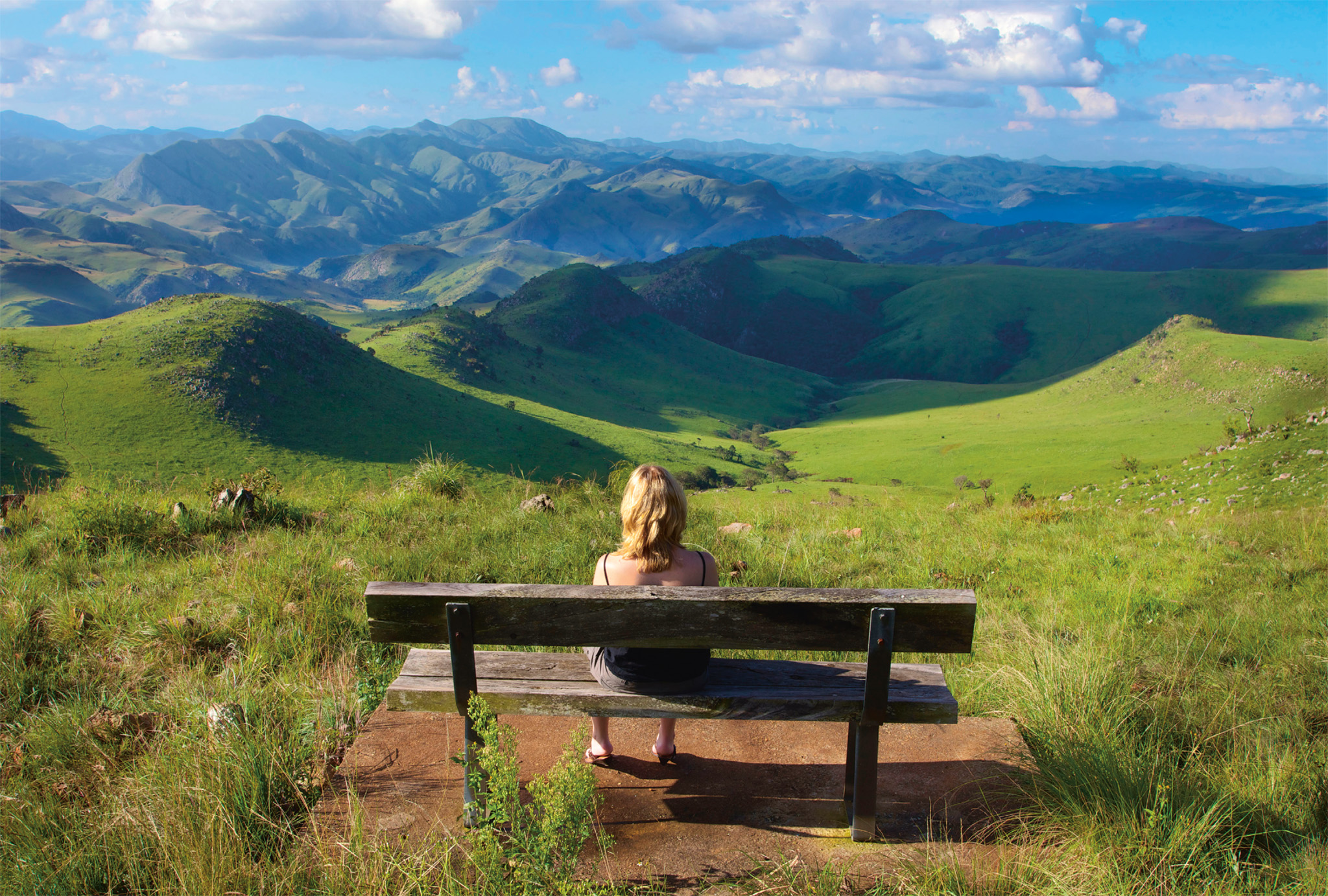
t Taking in the spectacular mountain views of Malolotja Nature Reserve
Nestled up against the South African border, Malolotja is eSwatini’s last true wilderness, with just 20 km (12 miles) of roads traversing its 180-sq-km (69-sq-mile) area. It is also the kingdom’s premier hiking destination, transected by numerous day trails as well as a tough seven-day route.
The reserve protects a landscape of layered mountains and grassland plateaux studded with delicate wildflowers, blossoming proteas and the rare Barberton and Kaapsehoop cycads. Wildlife includes regional endemics such as black wildebeest and blesbok, and even a few resilient (and elusive) leopards. From May to January, a colony of 50 southern bald ibis frequents the cliffs above the Malolotja Falls, while breeding blue swallows swoop over the grassland in summer. Blue crane and Gurney’s sugarbird are present year-round. For adrenaline junkies, the privately run Malolotja Canopy Tour provides 11 elevated forest platforms connected by ten zip-line slides, and a suspension bridge across the Majolomba River.
Situated close to the busy Oshoek border post, this village is the site of the Ngwenya Glass Factory, which uses recycled glass as the source of its wonderful handmade, mouth-blown products.
Close by are the world’s oldest known mine workings, on the slopes of Ngwenya Mountain. Dated to before 40,000 BC, Ngwenya Mine was a source of specularite, a type of iron that glitters when crushed. The mine predates the craft of iron smelting by several millennia; the Stone Age humans who worked it presumably used the specularite for decorative purposes.
Ngwenya Glass Factory
# 8am–4pm daily ¢ 1 Jan, 25–6 Dec ∑ ngwenyaglass.co.sz
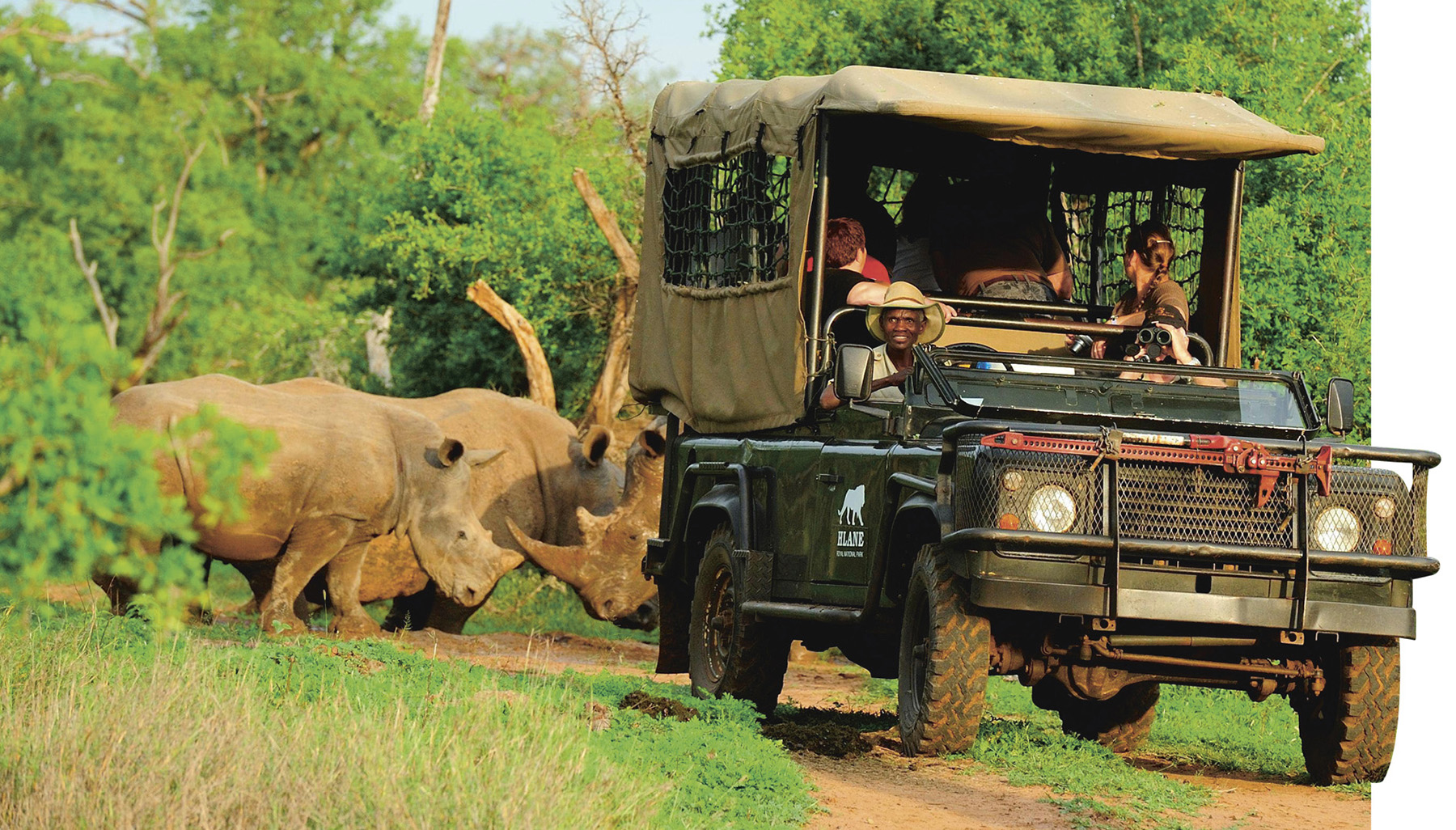
t A 4WD tour through Hlane Royal National Park, passing breathtakingly close to some of the reserve’s rhino population
The name Hlane translates as “wilderness”, which slightly overstates the case, but this is eSwatini’s largest and most diverse wildlife sanctuary. Designated as a royal hunting ground since colonial times, the park is still owned by King Mswati III, who pops by on certain ceremonial occasions. Naturally occurring large mammals such as zebra and spotted hyena were joined more recently by reintroduced lion, cheetah, elephant and white rhino. Partitioned into several large enclosures as a measure against poaching, Hlane can feel uncomfortably artificial when explored by vehicle, and the lion enclosure can be visited on guided tours only. But the guided game walks are worthwhile, and often involve close encounters with white rhino and elephant.
EXPERIENCE Eswatini
Reed Dance Ceremony

Adapted from an older chastity rite during the reign of Sobhuza II, the Umhlanga Reed Dance is eSwatini’s largest annual festival. It attracts around 40,000 traditionally attired, bare-breasted female virgins, who must march to a river and cut down a reed to present as a tribute to the Queen Mother at her royal village of Ludzidzini.
